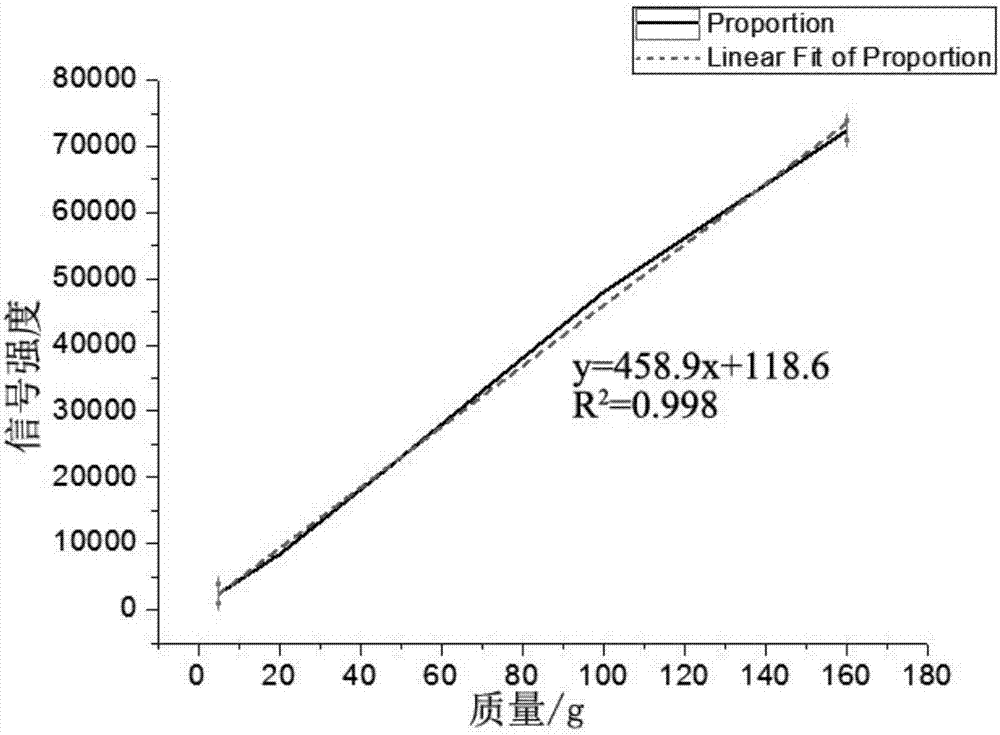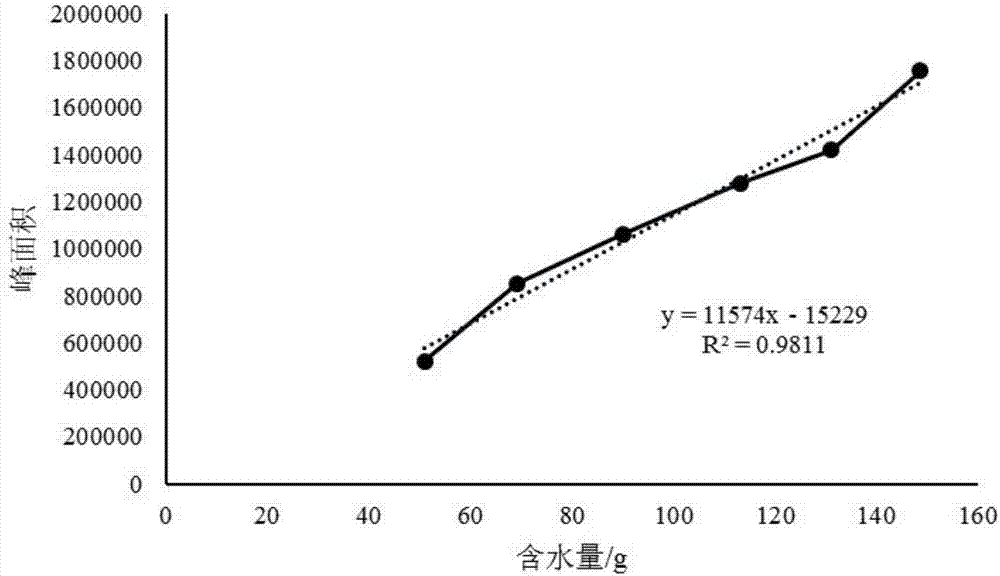Analysis method for low field nuclear magnetic resonance nondestructive detection of Daqu moisture content
A low-field NMR and non-destructive testing technology, applied in the field of analytical chemistry, can solve the problems of cumbersome and time-consuming, difficult to realize the relative distribution of water in Daqu, sample damage, etc., and achieve the effect of rapid measurement, real-time online measurement and rapid response
- Summary
- Abstract
- Description
- Claims
- Application Information
AI Technical Summary
Problems solved by technology
Method used
Image
Examples
Embodiment 1
[0033] 1. Purpose of the test
[0034] (1) Establish the calculation equation for low-field NMR detection of water content in Daqu;
[0035] (2) Detect the overall moisture content of the target Daqu sample.
[0036] 2. Test material
[0037] Daqu samples (in pieces and crushed).
[0038] 3. Test equipment
[0039] Low-field nuclear magnetic resonance instrument: MacroMR12-150H-I, produced by Suzhou Numei Company, field strength 0.35T, coil diameter 300mm, frequency 12.80MHz, temperature controlled in the range of 31.99-32.01℃; vacuum drying oven: DZF-6050B, Shanghai No. 1 Produced by Heng Technology Co., Ltd., the pressure is 133Pa, and the temperature is 60±1℃.
[0040] 4. Test process
[0041] (1) Accurately weigh 5g, 20g, 50g, 100g, 160g of the same crushed Daqu material and put it into an NMR tube to detect the first peak value. Take the mass as the abscissa and the first peak point value as the ordinate to perform linear regression, such as figure 1 As shown, the d...
Embodiment 2
[0055] Compared with Example 1, only the specific parameters of CPMG sequence analysis are different, and other steps or parameters are consistent with Example 1. The specific parameters of the CPMG sequence analysis adopted in this embodiment are as follows: 90° pulse width P1: 8 μs; 180° pulse width: 4 μs; receiver bandwidth SW: 200KHz; resampling waiting time TW: 500ms; time delay DL1: 0.50; Pre-amplification gain PRG: 2; analog gain RG1: 5; digital gain DRG1: 5; echo number Echonum: 1000; repeated sampling times NS: 8. The predicted moisture content is shown in Table 3.
[0056] Table 3. The real water content of Daqu samples and the predicted water content of the first peak point
[0057]
[0058] According to the above test data results (Table 3), the relative error between the actual value and the calculated value is between 5% and 8%.
PUM
 Login to View More
Login to View More Abstract
Description
Claims
Application Information
 Login to View More
Login to View More - R&D
- Intellectual Property
- Life Sciences
- Materials
- Tech Scout
- Unparalleled Data Quality
- Higher Quality Content
- 60% Fewer Hallucinations
Browse by: Latest US Patents, China's latest patents, Technical Efficacy Thesaurus, Application Domain, Technology Topic, Popular Technical Reports.
© 2025 PatSnap. All rights reserved.Legal|Privacy policy|Modern Slavery Act Transparency Statement|Sitemap|About US| Contact US: help@patsnap.com



